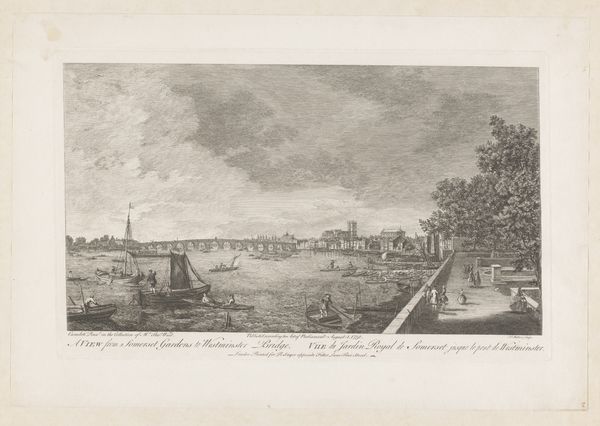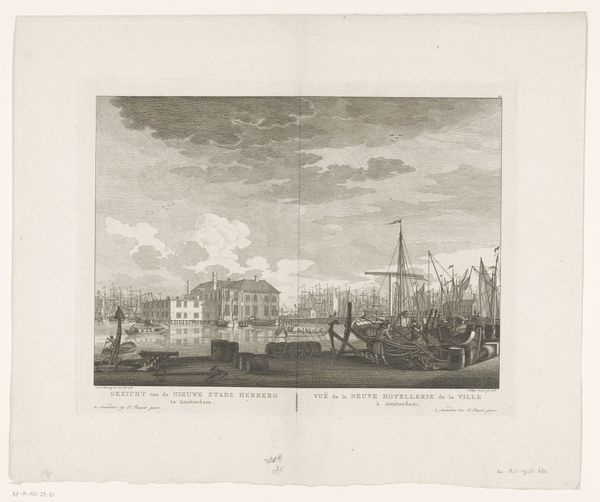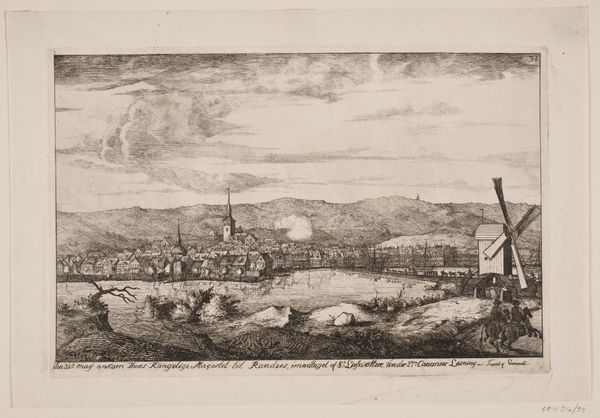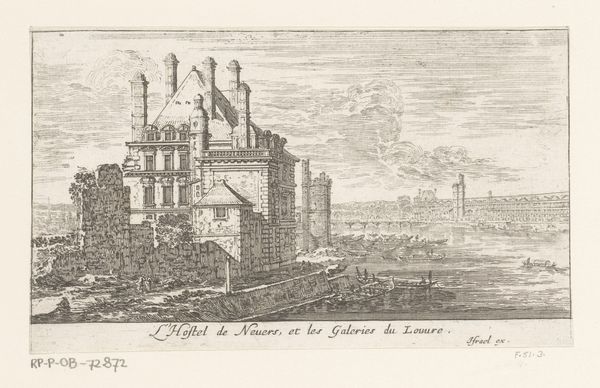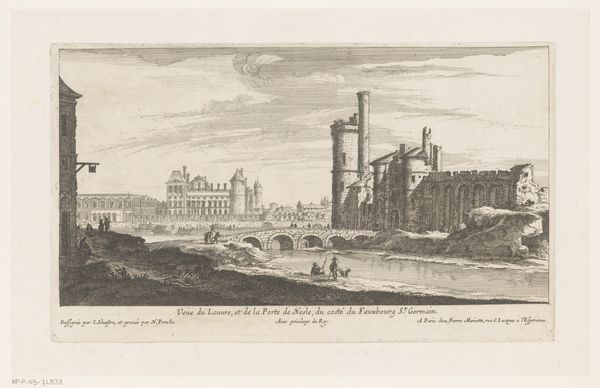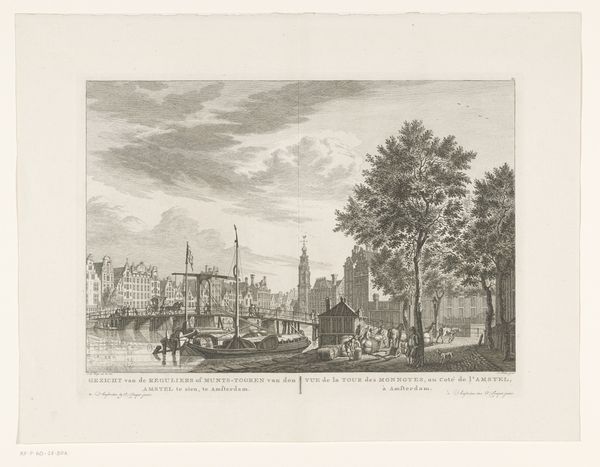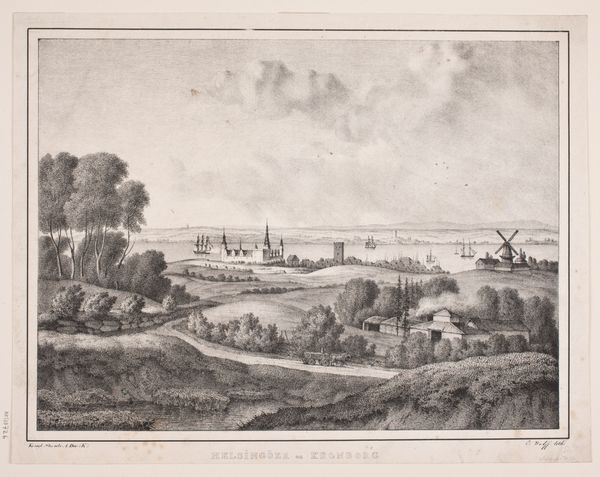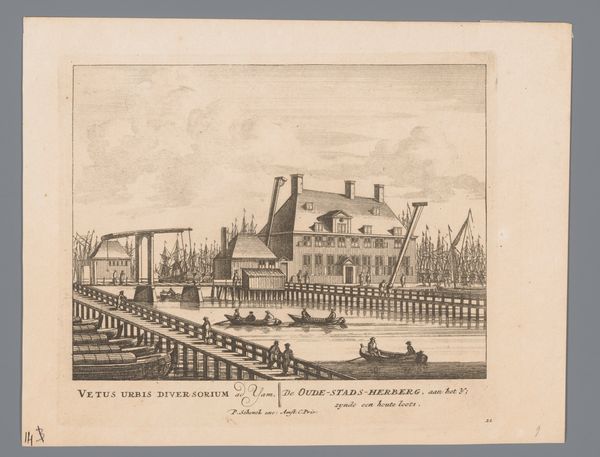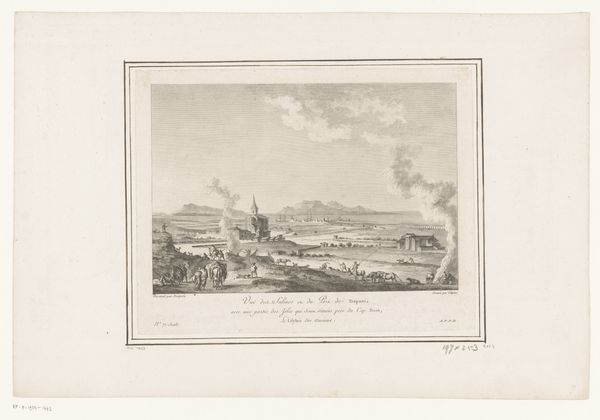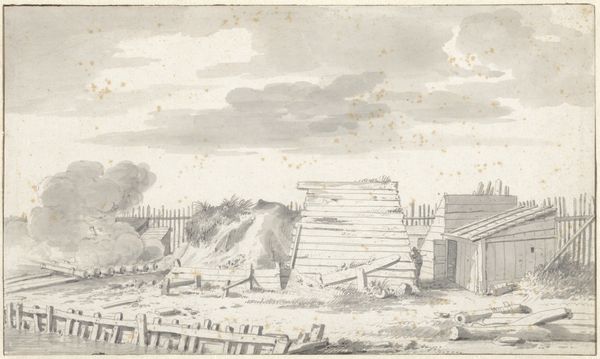
print, etching, engraving, architecture
#
dutch-golden-age
# print
#
etching
#
old engraving style
#
traditional media
#
landscape
#
house
#
cityscape
#
history-painting
#
engraving
#
architecture
Dimensions: height 184 mm, width 242 mm
Copyright: Rijks Museum: Open Domain
Editor: Here we have "Ruins after the Fire in Uithoorn, 1781," a print made after 1782 by Caspar Jacobsz. Philips. It's an etching and engraving showing a cityscape in ruins, a pretty somber scene. What do you see in this piece? Curator: Well, beyond the immediate depiction of destruction, I see a very deliberate act of public memory-making. Prints like these circulated widely, shaping public perception of events. Consider how the artist chose to represent this tragedy: we see not just the devastation, but also the stoicism of the figures walking through the rubble. Editor: So, you're saying it's not just a factual record? Curator: Precisely. It’s a constructed narrative. How does the artist visually communicate this "stoicism" you perceive? Are these figures distraught, panicked, or something else? The deliberate depiction implies resilience, a community facing adversity. It implicitly asks viewers to consider how *they* should respond to such events and plays a critical role in shaping historical narratives and even solidifying a communal identity around shared experiences of disaster and recovery. Editor: I see what you mean, it is as if the people were spectators just like us! Curator: Yes, almost. And how might that pose a risk of erasing other aspects? Could such representations, intended to galvanize community spirit, also overshadow the trauma, the economic devastation, or even questions of accountability related to the fire itself? What did you make of that big house in the back that looks mostly undamaged? Editor: Wow, I hadn't thought about the erasure. Maybe they want us to consider that the damage was selective. I’ll certainly view similar historical depictions more critically now. Thanks. Curator: Likewise, this highlights the active role art plays in shaping how we understand and remember the past, it has been enriching!
Comments
No comments
Be the first to comment and join the conversation on the ultimate creative platform.
